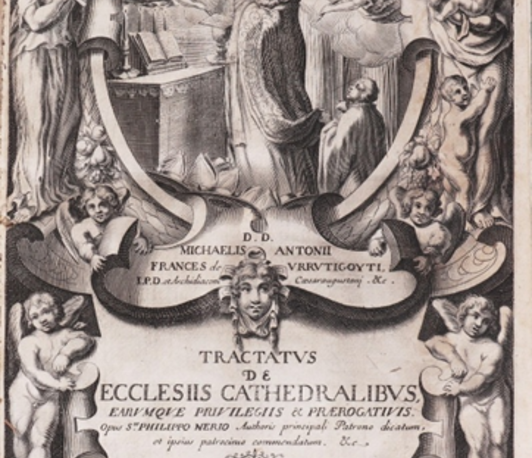A Cúria Romana e o processo de ereção de dioceses no império português: prerrogativas, normas, agentes e dinâmicas institucionais (Séc. XVI e XVII)
Iberian Worlds
- Datum: 25.02.2025
- Uhrzeit: 13:00 - 14:00
- Vortragende(r): Ellen Marquez Luz
- Ort: mpilhlt, Turmcarree
- Raum: A 601
- Gastgeber: Pilar Mejia
- Kontakt: mejia@lhlt.mpg.de

In 1665, Miguel de Urrutigöyti published the treatise De Ecclesiis Cathedralibus, dedicated to elucidating the process of diocesan creation in the early modern period. The author underscores the relevance of his work to the “Church of God,” arguing that, until then, no one had systematically explored this subject.
One might expect that a matter of such importance would have been addressed in the Tridentine decrees. The prelates gathered at the Council discussed the division and union of bishoprics, as well as the papal prerogative over any modifications to diocesan geography. However, the only decree that directly addresses the subject is found in the XXIV Session, Decree on Reformation, Chapter XIII. Yet, it does not specify the necessary procedures for the establishment of a new diocese, nor the legitimate reasons for its foundation. Thus, in the early modern period, the Holy See relied on historical precedents and references to canon law to deliberate on the matter. Urrutigöyti, therefore, was justified in emphasizing the novelty and significance of his text.
An ultramontane, the author asserts that the prerogative of erecting dioceses had always been reserved to the Roman pontiffs. Although such a prerogative was the norm in his time, it is known that it did not always exist uncontested and that the emergence of modern states imposed limits on papal authority, making agreements with kings and secular princes indispensable when altering the diocesan structure.
Considering the sources, it is nonetheless undeniable that, in the early modern era, no reorganization of the diocesan network took place without papal authorization. It is equally evident that the Roman Curia progressively refined the structures, procedures, and agents involved in this process.
This oral presentation will explore this subject, with a particular focus on the processes of diocesan creation within the Portuguese Empire.